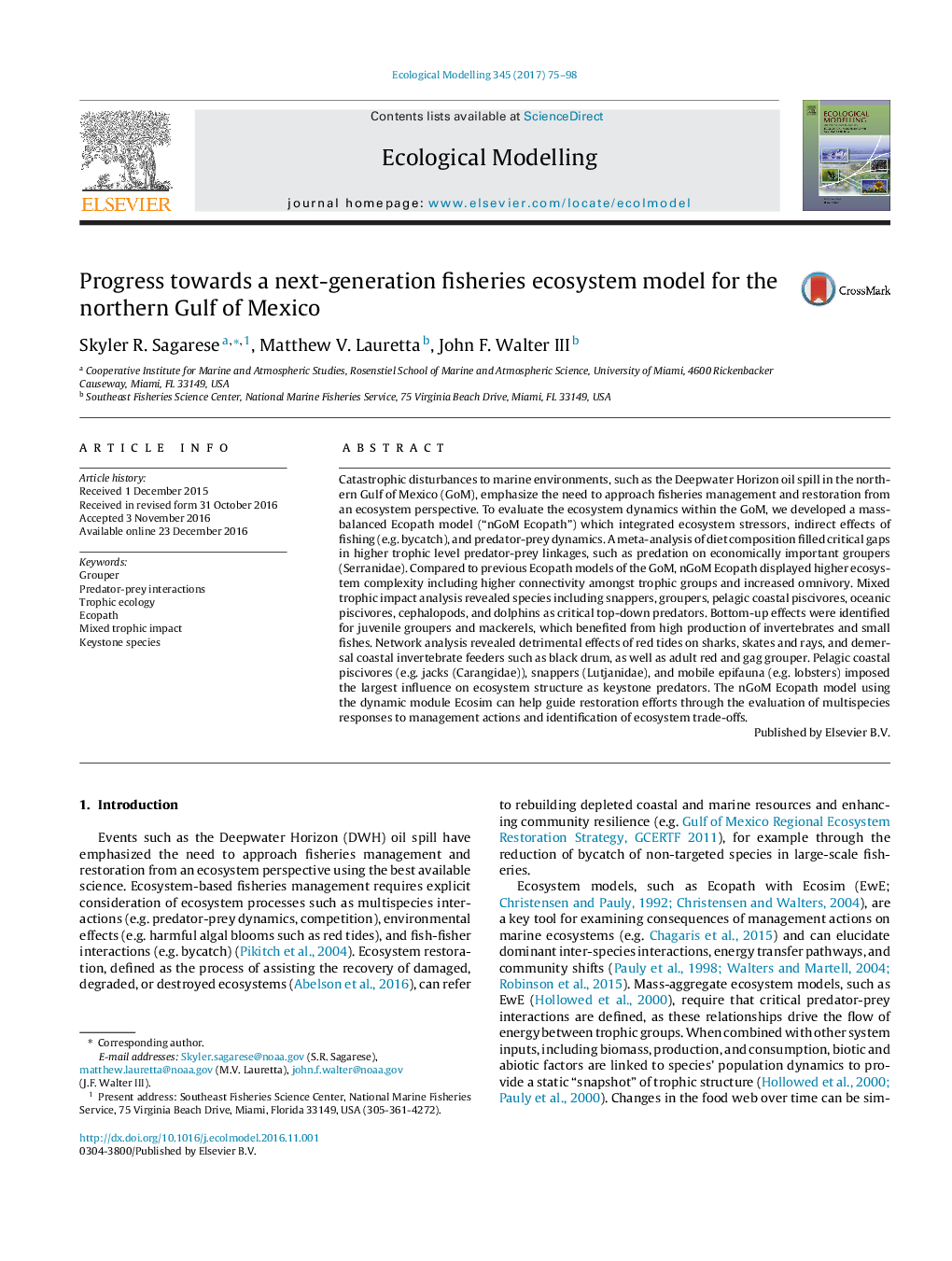| Article ID | Journal | Published Year | Pages | File Type |
|---|---|---|---|---|
| 5742264 | Ecological Modelling | 2017 | 24 Pages |
â¢Mass-balanced Ecopath model integrating ecosystem stressors and fisheries bycatch.â¢Network analysis evaluates impacts of fisheries and red tide events on species.â¢Meta-analysis of diet composition filled critical gaps in predator-prey linkages.â¢Higher connectivity (amongst groups) and increased omnivory compared to past models.â¢Reveals detrimental effects of red tides on sharks, skates and rays, and fishes.
Catastrophic disturbances to marine environments, such as the Deepwater Horizon oil spill in the northern Gulf of Mexico (GoM), emphasize the need to approach fisheries management and restoration from an ecosystem perspective. To evaluate the ecosystem dynamics within the GoM, we developed a mass-balanced Ecopath model (“nGoM Ecopath”) which integrated ecosystem stressors, indirect effects of fishing (e.g. bycatch), and predator-prey dynamics. A meta-analysis of diet composition filled critical gaps in higher trophic level predator-prey linkages, such as predation on economically important groupers (Serranidae). Compared to previous Ecopath models of the GoM, nGoM Ecopath displayed higher ecosystem complexity including higher connectivity amongst trophic groups and increased omnivory. Mixed trophic impact analysis revealed species including snappers, groupers, pelagic coastal piscivores, oceanic piscivores, cephalopods, and dolphins as critical top-down predators. Bottom-up effects were identified for juvenile groupers and mackerels, which benefited from high production of invertebrates and small fishes. Network analysis revealed detrimental effects of red tides on sharks, skates and rays, and demersal coastal invertebrate feeders such as black drum, as well as adult red and gag grouper. Pelagic coastal piscivores (e.g. jacks (Carangidae)), snappers (Lutjanidae), and mobile epifauna (e.g. lobsters) imposed the largest influence on ecosystem structure as keystone predators. The nGoM Ecopath model using the dynamic module Ecosim can help guide restoration efforts through the evaluation of multispecies responses to management actions and identification of ecosystem trade-offs.
